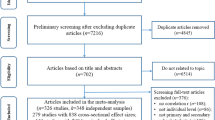Abstract.
In this paper the controversial educational topic of class size reduction is addressed. Controlling for a large number of observable characteristics and potential endogeneity in the class size variable, an educational production function is estimated using a quantile regression technique. The “conventional wisdom” that class size reduction is a viable means to increase scholastic achievement is discounted. Rather, the results point towards a far stronger peer effect through which class size reduction may play an important role. Due to heterogeneity in the newly identified peer effect, class size reduction is shown to be a potentially regressive policy measure.
Similar content being viewed by others
Author information
Authors and Affiliations
Rights and permissions
About this article
Cite this article
Levin, J. For whom the reductions count: A quantile regression analysis of class size and peer effects on scholastic achievement. Empirical Economics 26, 221–246 (2001). https://doi.org/10.1007/s001810000054
Issue Date:
DOI: https://doi.org/10.1007/s001810000054




